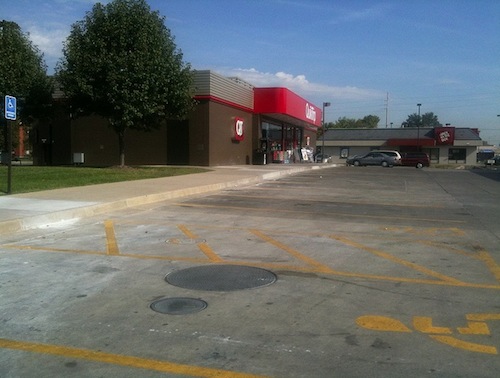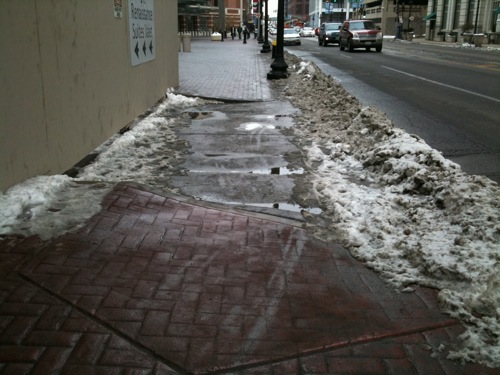Family Dollar Misses The Walkability Mark
The Family Dollar store at 6000 Natural Bridge was built in 2006.
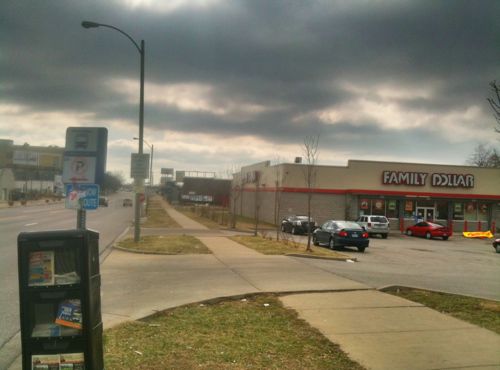
I’ve stopped by twice in the last two weeks and both times I spotted customers who were pedestrians. Â During the week there were more pedestrian customers than driving customers, the opposite was true yesterday. Â Family Dollar caters to a lower income crowd, those who are often transit dependent. Yet, they don’t make it easy for their own customers who arrive on foot.
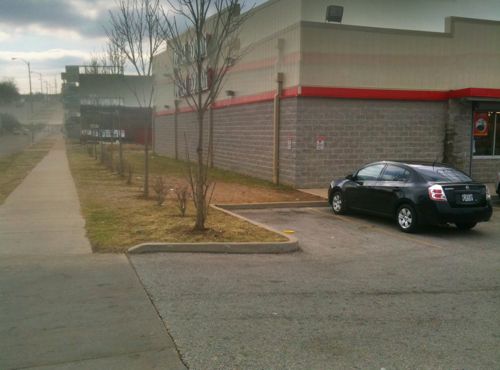 Family Dollar replaced the public sidewalk along Natural Bridge — 300 feet along the property line. That is a good start, but just 20 more feet of sidewalk would have enabled pedestrians to get from the public sidewalk to the private walk in front of the door without having to walk through grass or mud.
Family Dollar replaced the public sidewalk along Natural Bridge — 300 feet along the property line. That is a good start, but just 20 more feet of sidewalk would have enabled pedestrians to get from the public sidewalk to the private walk in front of the door without having to walk through grass or mud.
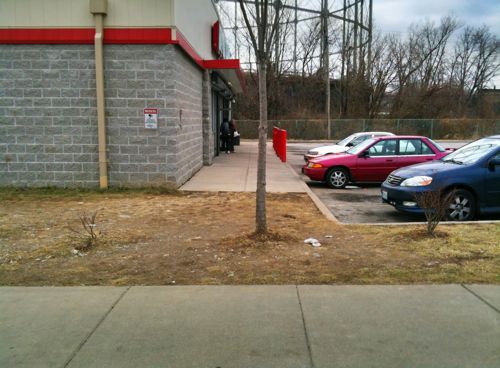 Pedestrians have so little value in St. Louis that a business with many pedestrian customers can just ignore how they come and go. St. Louis needs to mandate that new buildings be built with connections from public sidewalk to main entrance. Also, new occupancy of existing buildings should also require a pedestrian connection. If a public sidewalk exists, businesses should be required to connect to it. Period!
Pedestrians have so little value in St. Louis that a business with many pedestrian customers can just ignore how they come and go. St. Louis needs to mandate that new buildings be built with connections from public sidewalk to main entrance. Also, new occupancy of existing buildings should also require a pedestrian connection. If a public sidewalk exists, businesses should be required to connect to it. Period!
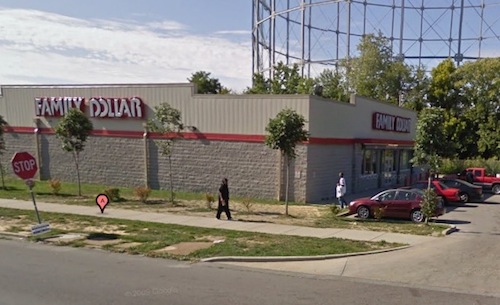
Pedestrian connections should be a given in the city, especially when tax incentives are given for the development!

Ordinance 67014. sponsored by 22nd Ward Ald, Jeffrey Boyd, covers lots of strings for the redevelopment of the property but the basic need of walking from the public sidewalk to the front door of the business establishment just wasn’t important enough I guess.  The above tax info can be found at Geo St. Louis.
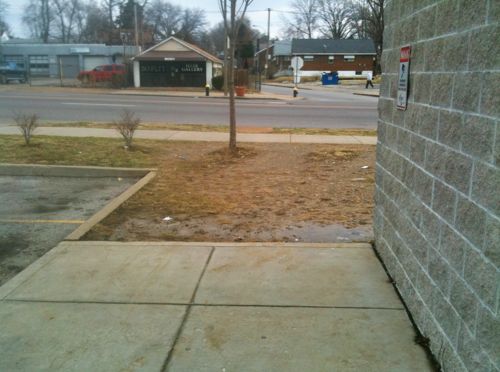
I have contacted Family Dollar to see about them connecting to the public sidewalk, hopefully they will be receptive.
– Steve Patterson

